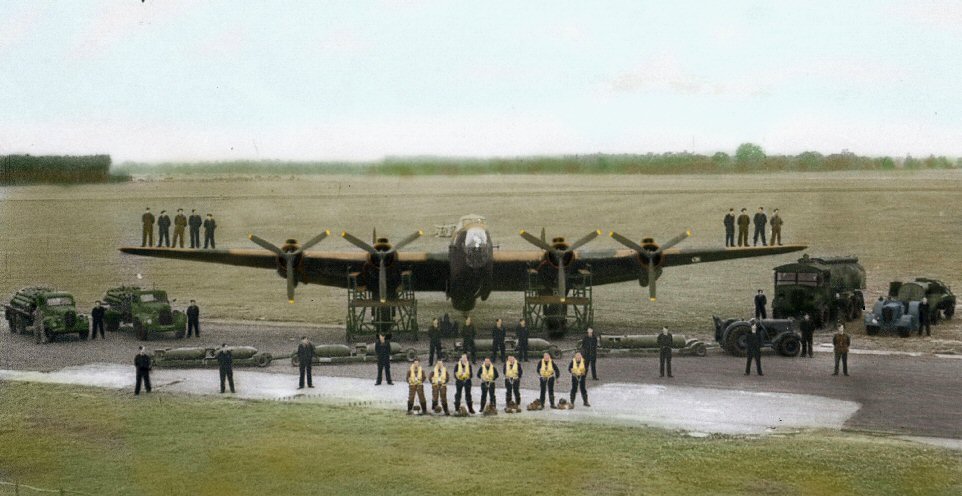Halifax - Bless 'Em All Updated: 23 DEC 2019
 |
|
Han sendte også Halifax Print af Halifax B. Mk. III LW170. Der er brug for folk af alle slags for at gøre en Halifax klar til en mission. Mere om det i sangen i version på engelsk. |
In addition to the usual ground crew, those men who
worked tirelessly in all kinds
The refuellers attended with their fuel bowsers or
tankers to top up the fuel tanks with the quantities of petrol requested by
the Flight Engineer and the ground crew engine mechanics made sure that each
engine had been turned over by at least two revolutions by hand before start
up to prevent the engine oil collecting in the lower cylinders causing what
was called a “Hydraulic lock” and damaging an engine. This was a problem
with the sleeve valve radial engine such as the Bristol Hercules.
Then there were those little jobs which few people even
think about such as refilling the crew’s compressed oxygen bottles and
bringing on board the homing pigeons and if necessary checking and replacing
the dinghy and other survival equipment.
When the ground crew’s work was done and the seven
members of the aircrew arrived at the dispersal, the senior NCO of the
ground crew would almost begrudgingly lend “his” aircraft to the aircrew for
the duration of the sortie and the pilot in his capacity as Captain would
accept the aircraft after conducting his own pre-flight checks by signing
the appropriate page in the RAF Form 700.
Before the aircrew even set off to their aircraft there
were things which had to be done, on a personal note, there was the letter
“To be delivered in the event of my death” and all the superstitions which
must be carried out in the correct order to guarantee a successful op, there
were the various briefings, target, meteorology, navigation points, weapons
brief and so on. And then to the pre-flight meal, traditionally of bacon and
eggs, then pick up their rations for the trip from their respective messes,
a sandwich, some boiled sweets and chocolate and a thermos flask of hot soup
which usually smelt like rubber for some reason then it was over to the
flight safety section to collect their parachute packs which they carried to
the aircraft and stowed in the appropriate carrier in the aircraft. The
pilot’s parachute was often already installed in his seat, but the rest of
the crew would have to clip their parachutes onto two large “dog lead” type
clips on the chest part of their harnesses.
"Regarding the bomb release mechanisms, as far as I know the bomb aimer
could select to drop bombs individually or all at the same time. He could
also elect to drop the bombs in a timed "stick"; after he'd pressed the
release button the release "computer" could then release the bomb load in a
preset pattern and at preset timed intervals, often set to something like a
half second between each bomb release. There were a number of bombs which
looked like a canister, they were usually known as HC or High Capacity bombs
but they were wider in construction and were usually 4000 or 8000 lb devices
often called "cookies". Cookies were dropped as just a canister without
aerodynamic flights on the tail end. The way that the incendiary canister
works was a small parachute was deployed during the fall which operated a
mechanism to open the sides of the device allowing the small incendiary
bombs to fall out. The other large bomb which took the shape of a canister
was the "Blockbuster". |